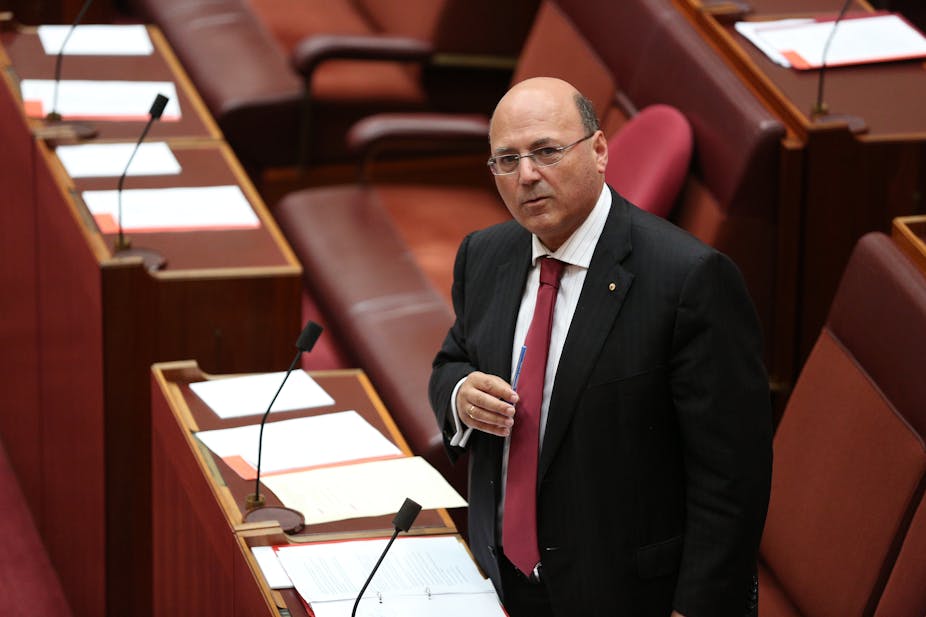Australian business’s innovation track record has been patchy, but it’s commercialisation track record has been even worse.
Now the Abbott Government is considering another proposal – this time from Ausbiotech and the Export Council of Australia – to encourage manufacturers to develop and commercialise patent technology in Australia.
The initiative, known as “patent box” tax rules, would lower taxes payable on profits from patents developed in Australia.
With considerable tax incentives already available, the Government would be counting on these new rules to not only encourage innovation, but also the next stages of the business process.
A long history of tax incentives
Innovation has long been considered a driver of economic development, measured by research and development (R&D) expenditure and patent statistics.
Experiments with using financial instruments to encourage R&D spending by Australian industry started in 1985 with the introduction of a 150% tax concession for R&D expenditure by John Button, then Minister for Industry and Commerce in the Hawke Government.
And for a while this was successful. Business R&D spending, as a share of GDP, grew 8.8% each year in the decade after the concession was introduced and Australia reached 8th position in the OECD for R&D.
But increasing misappropriation of the concession led to it being scaled back to a minimal level. By 1999, Australia ranked 17th in the OECD ranking for private R&D expenditure.
In 2001, the Howard Government introduced Backing Australia’s Ability – An Innovation Action Plan for the Future. Alongside other measures, the plan delivered a 175% R&D premium concession and introduced a new “innovation patent” system designed to encourage small firms to innovate.
Gross domestic expenditure on R&D rose from 1.73% in 2004 to 2.26% in 2008. Following the Cutler Review, the Rudd Government introduced further concessions. But R&D expenditure had dropped to 2.20% by 2010, ranking Australia 11th in the OECD.
The most recent changes came with the revitalisation of the R&D tax concessions in 2011.
It comprised a 45% refundable tax offset (equivalent to a 150% deduction) for eligible companies with a turnover of less than $20 million a year, and a non-refundable 40% tax offset (equivalent to a 133% deduction) to all other eligible entities.
The case for “patent box” rules
The history of tax concessions for R&D expenditure is a good indication that it is an effective mechanism.
Lowering the tax on patent profits is a recognition that incentives are required past the initial R&D and into the commercialisation and manufacturing stages of a business venture.
This is particularly pertinent for Australia as the cost of production is often higher due to labour costs and distance from markets.
Patent applications in Australia by Australian business runs at approximately 10% of all patent applications received each year by the patent office in IP Australia. The major share of applications come from the US, Japan and Germany.
Only 1,311 of the total 17,724 standard patents granted last year were owned by Australians. If patent statistics are any indication of innovation, and in turn indicate economic development, then perhaps yet another incentive scheme is necessary for Australia.
Given Australia’s major trading partners in the Asia Pacific region and Europe have introduced such “patent box” measures, then surely the same rules should be considered domestically.
What is important to recognise is that the current R&D tax incentives don’t have an impact past the R&D stage. And yet it is the next stages of development, the commercialisation and production stages, that have historically received no incentive to remain in Australia.
When it comes to R&D commercialisation, intellectual property and human capital is moving offshore to take advantage of low tax jurisdictions. Statistics have revealed that in 2011, for example, Australian residents filed 8,557 patent applications overseas but just 2,600 patent applications in Australia.
Now, with the mining boom declining, Australia needs to consider how to encourage further capital investment and the creation of new jobs, and prevent loss of production capability to more competitive nations.
The patent box is one such mechanism already reaping rewards for the United Kingdom in clawing back investment from Ireland. And while the rules would mean a lower tax rate for profits, the tax base would be broadened as a result of increased domestic investment.
Will yet another tax incentive make a difference? That depends on how it is designed and how it compares to the mechanisms already adopted by our neighbours and major trading partners.

